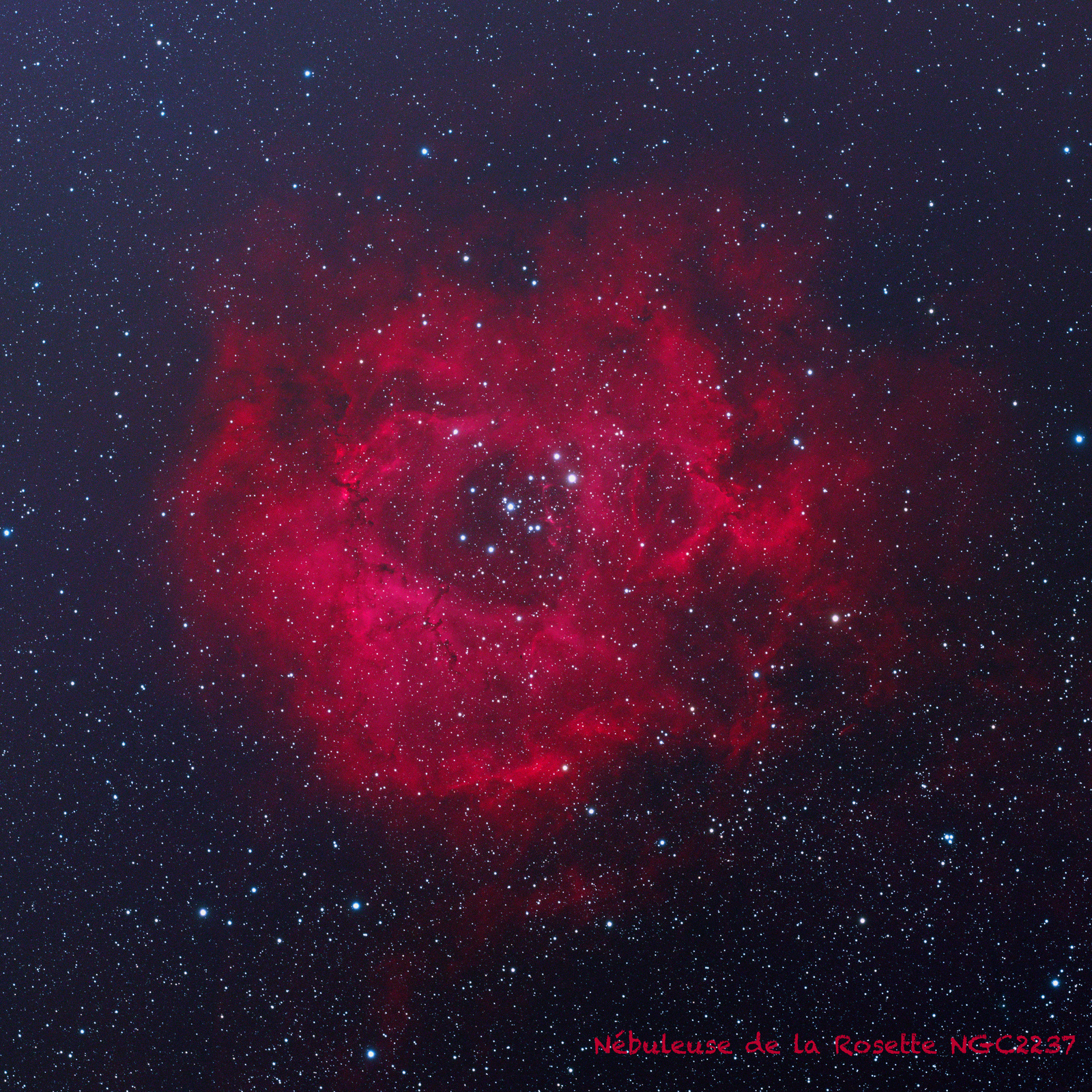
The Rosette Nebula, also cataloged as NGC 2237, is part of a larger complex that includes several associated NGC objects (NGC 2238, 2239, and 2246) along with the open star cluster NGC 2244 at its core. Here are more details about this astronomical feature: 1. Location and Distance: The Rosette Nebula is located around 5,000 light-years from Earth in the Monoceros constellation, which is on the celestial equator and can be viewed from most places on Earth. 2. Size: This nebula spans roughly 130 light-years in diameter, making it one of the larger nebulae visible in the night sky. 3. Formation and Structure: The Rosette Nebula is an emission nebula, which means it emits its own light. The radiation from the young, hot stars ionizes the surrounding hydrogen gas, causing it to emit light primarily in the red part of the spectrum. The central cavity of the nebula has been cleared out by the stellar winds from the young stars in the cluster NGC 2244. 4. Star Formation: The nebula is known for being a prolific star-forming region, with the central cluster NGC 2244 containing young, massive stars that have formed within the last few million years. The winds and radiation from these stars are sculpting the nebula's structure and may trigger the formation of new stars in the denser parts of the cloud. 5. Observation: The Rosette Nebula can be observed with amateur telescopes under good conditions, though its large size can make it challenging to view the entire structure at once. Its brightness allows for clear observation of the central cluster and the surrounding nebula, although the distinctive red color is often more pronounced in long-exposure photographs than to the naked eye or through a telescope. 6. Scientific Interest: Astronomers study regions like the Rosette Nebula to understand the processes of star formation and the interaction between young stars and their natal clouds. It serves as an excellent laboratory for understanding the lifecycle of interstellar matter in our galaxy.
| Name of instrument | ZWO ASI6200MM Pro |
| Exposure time in seconds / image | 300.00 |
| Binning factor, horizontal axis/vertical axis | 1/1 |
| Filter used when taking images | 5 x Lpro / 5 x Ha / 5 x G / 5 x B |
| Pixel size including binning, X-axis (um)/Y-axis (um) | 3.76/3.76 |
| Camera gain in electrons per data number | 0.78 |
| Sensor temperature | -10°celcius |
| Name of telescope | ZWO AM5 |
| Focal length (mm) | 531.30228 |
| Right ascension of the center of the image (deg) | 98.56 |
| Declination of the center of the image (deg) | 5.02 |
| Start date/time of observation (UTC) | 2024-01-19T22:51 |
One response to “Rosette Nebula”
-
👍👏
Leave a Reply